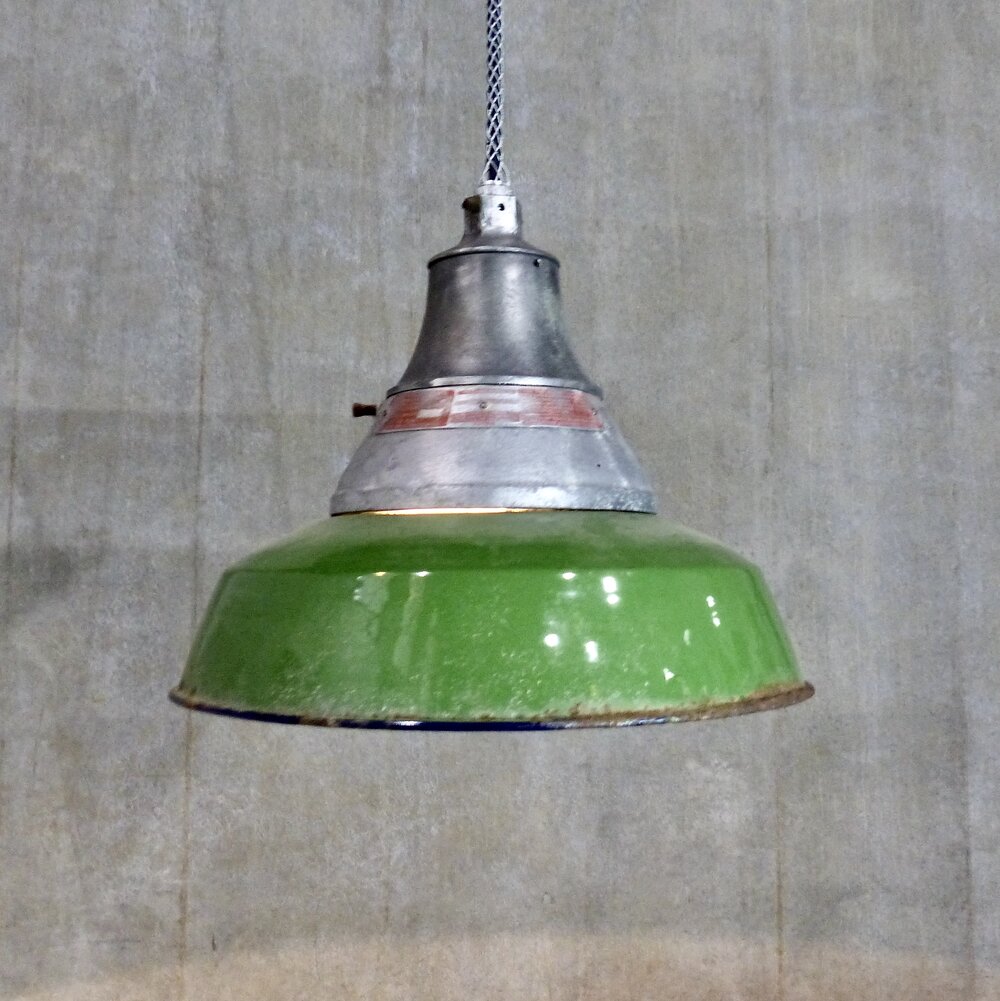
Circa 1940 Crouse Hinds Industrial Pendant Lights
- Regular price
- $795.00 CAD
- Sale price
- $795.00 CAD
- Regular price
-
Description
15H” x 16” dia.
Authentic Crouse Hinds industrial pendants in classic green enamel and with ‘explosion’ proof globes. Set of eight currently in stock. Re-wired and inspected and approved to current electrical standards; ceiling mounting plates included. Price per light.
Crouse Hinds was a pioneer in factory lighting since its founding in 1894 in Syracuse, NY. It began making traffic light signals but quickly expanded into many types of durable, commercial lights. The company’s ‘explosion proof’ lights were created for use in hazardous locations. The dome, glass globe, bolts, and threads were designed to withstand an internal explosion. The lights have now become a signature element in Industrial-styled homes and offices.


